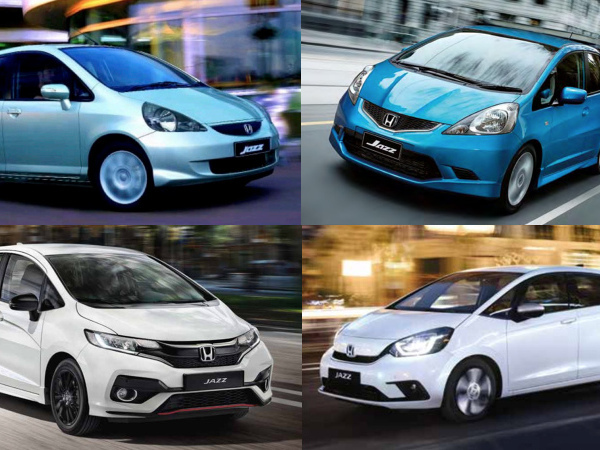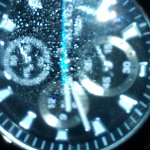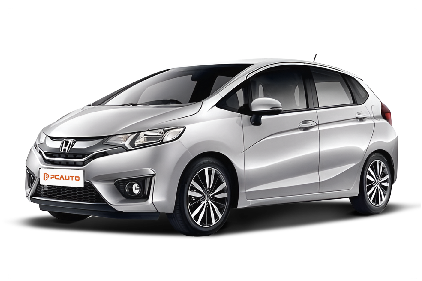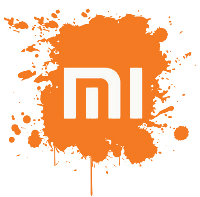Q
Which model of Honda Jazz is equipped with a sunroof?
In the Malaysian market, some higher-spec variants of the Honda Jazz (also known as the Honda Fit) do come with a sunroof. This is especially true for certain trims of the third-generation Jazz (codenamed GK5), which was around from 2014 to 2020 – think the Jazz RS or the top-tier Jazz Hybrid models. These usually pack a power sunroof to up the driving experience ante.
A sunroof isn't just about letting in more light and fresh air; it also adds a touch of style to the car's exterior. But here's the thing: sunroof availability tends to depend on the specific model grade and year. So, before you sign on the dotted line, it's always a good move to check the exact specs on Honda Malaysia's official website or have a chat with an authorized dealer.
Sure, a sunroof boosts comfort, but it's not a set-it-and-forget-it feature. You'll want to keep the tracks and rubber seals maintained regularly to avoid headaches like water leaks or annoying rattles down the road. For Malaysian folks who love outdoor adventures, that sunroof can be pretty handy – on a clear day, it really opens up the view and makes the drive feel more spacious.
If you're eyeing a used Jazz, take a minute to test the sunroof's operation and ask to see any service records. Making sure it's in good working order is definitely worth the effort.
Special Disclaimer: This content is published by users and does not represent the views or position of PCauto.
Related Q&A
Q
What Segment is Honda Jazz?
The Honda Jazz is classified as a B-Segment small hatchback in the Malaysian market. This segment is typically characterized by flexible handling, economic practicality, and convenience for urban commuting, making it suitable for Malaysia's narrow streets and high fuel costs. The Jazz has become a popular choice in this segment, especially among young families and urban commuters, thanks to its iconic "Magic Seat" flexible seating design, efficient Earth Dreams engine technology, and spacious interior within a compact body.
In the Malaysian market, competing models in the same segment include the Toyota Yaris and Perodua Myvi. However, the Jazz is well - known for the high resale value and reliability of the Honda brand. It's worth noting that B - Segment vehicles in the Southeast Asian market generally prioritize fuel economy and maintenance costs. The combination of the Jazz's 1.5L i - VTEC engine and CVT transmission can achieve an actual fuel consumption of over 15 km/L, meeting the local consumers' demand for practicality.
In addition, this vehicle line was upgraded to a hybrid version in some global markets in 2021. However, the current models in Malaysia still mainly use traditional fuel power. Whether a new energy version will be introduced in the future depends on Honda's regional strategic adjustments.
Q
What is the Reslae Value of Honda Jazz?
The resale value of the Honda Jazz in the Malaysian used - car market is relatively stable. This is due to its reliable quality, low fuel consumption, and the high local recognition of the Honda brand. Depending on the vehicle's age, mileage, and condition, a 3 - to 5 - year - old Jazz can usually retain 50% - 65% of its original price. The Hybrid models may have a 5% - 8% premium because of their energy - saving features.
The key factors affecting its residual value include regular maintenance records (especially the maintenance of the CVT transmission), the body color (white and silver are more popular), and whether it is still within the original factory warranty period. It is recommended that car owners keep complete maintenance receipts and use original factory parts to maximize the vehicle's value retention.
Among its peers, the used - car price performance of the Jazz is better than some of its competitors. This is related to its flexible space design (such as the ULTRA seat system) and low failure rate. However, the specific transaction price still needs to refer to the real - time data on used - car platforms like Carlist or mytukar.
It's worth noting that the tax - exemption policy for domestic cars introduced in some regions after 2020 has slightly affected the price fluctuations of imported used cars. But as a cost - effective urban vehicle, the demand for the Jazz remains strong in urban areas like the Klang Valley.
Q
How Many CC is Honda Jazz?
The Honda Jazz models available in the Malaysian market are mainly equipped with a 1.5 - liter naturally aspirated engine with a displacement of 1497cc (cubic centimeters). This is a common 'golden displacement' for compact hatchbacks, balancing fuel economy and power performance. This engine uses Honda's i - VTEC technology, capable of outputting approximately 120 horsepower and 145 Nm of torque. It is paired with a CVT transmission or a 6 - speed manual transmission (depending on the version), which is suitable for urban commuting and flexible driving.
It's worth noting that while the displacement (CC) affects power output, the actual driving experience also depends on engine tuning, vehicle weight, and the matching of the transmission system. For example, Honda has optimized the combustion efficiency of the Jazz through Earth Dreams technology, making the torque more abundant at low speeds. Malaysian customers can also pay attention to the minor changes in different model years when making a choice. For instance, some versions after 2020 have upgraded the Honda SENSING safety system.
Similar models in the same class, such as the Toyota Yaris or Perodua Myvi, also use a similar displacement, but they have different technological focuses. It is recommended to take test drives for comparison. Additionally, Malaysia's automotive tax structure gives vehicles with a displacement below 1.5 liters a price advantage, which is also one of the reasons why the Jazz has been popular for a long time.
Q
What is the Engine in Honda Jazz?
The Honda Jazz available in the Malaysian market is equipped with a 1.5-liter i-VTEC naturally aspirated gasoline engine. This engine is well - known for its high efficiency and reliability. It has a maximum output power of approximately 120 horsepower and a peak torque of 145 Nm, making it suitable for city driving and daily commuting while also taking fuel economy into account.
This engine adopts Honda's classic i-VTEC technology, which optimizes power output and fuel consumption through an intelligent variable valve timing and lift system. Paired with a CVT continuously variable transmission, it offers a smooth driving experience.
In addition, the Honda Jazz also comes in a hybrid version (such as the e:HEV). It combines a 1.5-liter Atkinson cycle engine with a dual - motor system, further enhancing energy - saving efficiency, which is ideal for consumers with higher environmental protection requirements.
For Malaysian users, the durability and low maintenance cost of this engine are also among the reasons for its popularity. Moreover, Honda's after - sales service network covers the whole country, providing convenience for car owners. When it comes to the used - car market, the engine of the Jazz also has a relatively high resale value, making it an economical and practical choice.
Q
What is the Gearbox Type of Honda Jazz?
The transmission types vary among different versions of the Honda Jazz. Specifically, the 2019 Honda Jazz 1.5 S, 1.5 E, and 1.5 V versions all come with a CVT (Continuously Variable Transmission). This type of transmission offers a smooth shifting experience, making the driving process even more seamless and also helping to improve fuel efficiency.
On the other hand, the 2019 Honda Jazz 1.5 Hybrid version is equipped with a DCT (Dual-Clutch Transmission). A dual-clutch transmission allows for rapid gear changes and highly efficient power transfer, which can enhance the vehicle's dynamic performance and driving pleasure to some extent.
Each type of transmission has its own unique features. Consumers can choose the appropriate model according to their driving habits and needs.
Q
What is the PCD Size of Honda Jazz?
The PCD (Pitch Circle Diameter) size of the Honda Jazz is 4x100, which means its wheels have 4 bolt holes, and the centers of these holes are distributed on a circle with a diameter of 100 millimeters. This specification is very common in the Malaysian market and is suitable for many economy and compact cars. Understanding the PCD size is crucial when replacing wheels or upgrading tires because if the PCD doesn't match, the wheels won't be installed correctly, which may affect driving safety.
Apart from the PCD, when choosing wheels, you also need to pay attention to the center bore diameter (CB) and the offset value (ET) to ensure full compatibility. Owners of the Honda Jazz can choose factory - spec wheels or wheels from other brands that meet the 4x100 PCD when modifying their wheels. However, it is recommended to choose certified products to ensure quality and safety.
In addition, when modifying wheels, you need to pay attention to the traffic regulations in Malaysia to ensure that the modified vehicle meets local standards and avoid penalties for violations.
Q
Does Honda Jazz Support Apple Carplay?
Yes, some models of the Honda Jazz in Malaysia are indeed equipped with Apple CarPlay, especially the higher - spec versions like the Honda Jazz RS or Honda Jazz Hybrid. These models usually come with a touch - screen infotainment system that's compatible with Apple CarPlay. This allows users to connect their iPhones via a data cable and use functions such as navigation, music, and making calls. It's important to note that there might be differences in Jazz models of different years and configurations. It's recommended to confirm the specific features with the dealer before purchasing. The addition of Apple CarPlay significantly enhances driving convenience, enabling users to use common phone functions more safely without having to take their eyes off the road to operate their phones.
Moreover, the Honda Jazz is well - loved by Malaysian users for its flexible interior space design and fuel efficiency. It's ideal for city commuting and small families. If you have high requirements for in - car connectivity features, you can also look into similar configurations of other models in the same class, such as the Toyota Yaris or Mazda 2, to make a more suitable choice.
Q
What is the Tyre Brand of Honda Jazz?
The original-equipment tire brands for the Honda Jazz in the Malaysian market may vary depending on the model year and configuration. Common tire - supplying brands include mainstream manufacturers such as Dunlop, Yokohama, or Bridgestone. These brands are well-known for their wear resistance and wet - surface performance, which meet the requirements of the rainy climate in Southeast Asia. Car owners can confirm the specific tire model through the sidewall markings or the user manual. For example, the Dunlop ENASAVE EC300+ is a common choice for high-efficiency and energy-saving tires in recent years.
It's worth noting that since tires are consumable items, when replacing them, in addition to the original-factory specifications, you can also consider silent and comfortable products like the Michelin Primacy 4 or the Continental UC6. However, you must ensure that the size (such as 185/55 R16), load index, and speed rating meet the matching requirements of the Jazz's suspension setup and ABS system.
Regularly checking the tire pressure (it is recommended to do it once a month) and wheel alignment can extend the tire life. Especially on the high-temperature roads in Malaysia, the rubber ages more quickly. If the tread depth is found to be less than 1.6 millimeters, you should replace the tires immediately to comply with JPJ regulations.
Q
Is Honda Jazz a Good Car? Learn the Pros and Cons Here!
The Honda Jazz is a highly favored small hatchback in Malaysia. Its advantages include a flexible body size that is suitable for city driving, and it offers economical fuel consumption. The 1.5-liter i-VTEC engine it is equipped with provides smooth and reliable power. The interior space is cleverly designed. In particular, the "Magic Seats" allow for flexible adjustment of the storage space, making it suitable for families or young consumers. Moreover, the Honda brand has an extensive after-sales service network in Malaysia, making maintenance relatively convenient.
However, it does have some drawbacks. Its sound insulation is average, and wind noise is quite obvious when driving at high speeds. The rear suspension is tuned to be on the stiffer side, which affects comfort to some extent. Also, its configuration may not be as rich as that of its competitors in the same class.
For buyers with a limited budget who value practicality and brand reliability, the Jazz is a worthy option to consider. But if you're looking for higher comfort or more advanced technological features, you may need to compare other models.
In Malaysia's hot and rainy climate, it is recommended to regularly check the air-conditioning system and the anti-rust condition of the chassis to extend the vehicle's lifespan.
Q
What is the Width of Honda Jazz?
The body width of the Honda Jazz is 1,694 millimeters. This dimension is considered moderate among the common city compact cars in Malaysia. It can ensure that the interior lateral space is sufficient for three adults to sit comfortably, and at the same time, it can also flexibly maneuver through the narrow streets of Kuala Lumpur or the old shopping mall parking lots. As a global strategic model of Honda, the compact body design of the Jazz is particularly suitable for the winding mountain roads and congested urban roads in Malaysia. The MM concept (minimizing the mechanical space and maximizing the interior space) it adopts enables the 1,694-millimeter body width to achieve a class - leading interior space utilization rate. The magic seats in the rear can be folded in multiple combinations, which is very practical when carrying large items such as potted plants or durians.
It's worth noting that when purchasing a compact car in Malaysia, besides paying attention to the body width, you should also take note of the overall width data when the rear - view mirrors are unfolded. This is especially important for the local road conditions where motorcycles often shuttle through. The electric folding rear - view mirror function of the Jazz can handle this situation very well.
Latest Q&A
Q
How to change the ambient lighting in a Jaguar F-Pace?
Changing the ambient lighting color in your Jaguar F-Pace is a breeze. First, fire up the vehicle and make sure the infotainment screen is on. Then, head into the main menu and look for the "Vehicle Settings" option. Select "Ambient Lighting" from there, and you'll see a bunch of preset colors to choose from—blues, reds, whites, that sort of thing. Just tap your favorite on the touchscreen, and the system applies it right away. You can also tweak the brightness to fit different driving conditions. If you're a Malaysian owner, it's best to do this at night or in dimly lit areas so you can really see how it looks.
The ambient lighting in the F-Pace isn't just about upping the interior's premium vibe; it lets you set the mood in the cabin to match your personal style. It's a pretty common feature in luxury brands these days—Mercedes and BMW offer similar stuff—but what sets Jaguar apart is how well the lighting pairs with the interior materials. It just makes the whole cabin feel that much more luxurious. If you're really into customizing your in-car lighting, swing by your local Jaguar dealer and ask if there are any extra customization options or upgrade services available.
Q
How to set up cruise control in Jaguar F-PACE?
To set up cruise control in your Jaguar F-Pace, first make sure you’re on a road where it’s safe to use—you’ll need to be going at least 30 km/h. Hit the cruise control button on the left side of the steering wheel (it usually says "CRUISE" or has a speedometer icon), and you’ll see the cruise ready indicator pop up on the dashboard. Next, use the "+" or "-" buttons to set your desired speed, and the system will hold it steady. Need to pause? Just tap the brake or hit "CANCEL". To get back to your set speed, press "RES".
For our Malaysian drivers, a quick heads-up: be extra cautious using this on busy roads or in the rain. Don’t zone out and rely too much on the system—always keep an eye on what’s happening around you. The F-Pace’s standard cruise is solid, but step up to higher trims and you might get Adaptive Cruise Control (ACC), which automatically adjusts your speed to keep a safe gap from the car ahead. Either way, *you’re* still in charge—never take your focus off driving.
Lastly, keep those brakes and tires in check; regular maintenance helps the cruise control work like a charm. If you see any warning lights or the system acts up, swing by an authorized Jaguar service center in Malaysia to get it sorted out. Safe travels!
Q
What's the price of the Jaguar F-Pace?
In Malaysia, the price of the Jaguar F-PACE can vary depending on the trim level, optional extras, and current market promotions. Right now, you're looking at a starting price range of around RM 400,000 to RM 600,000 for a brand-new model. For the most up-to-date figures, it's always best to check in with your local authorized Jaguar dealer.
As Jaguar's luxury SUV offering, the F-PACE doesn't skimp on choice under the hood. You've got efficient Ingenium turbocharged engines for everyday driving, and if you're after a bit more punch with some eco-credentials, there's the potent PHEV plug-in hybrid version too – it really strikes a nice balance between performance and fuel efficiency.
What stands out about this Jag is its elegant design language, a nicely crafted interior, and all the latest tech. The Pivi Pro infotainment system comes as standard, and you get a comprehensive suite of driver assistance features. It's a solid pick for Malaysian buyers who want that blend of luxury and a bit of driving excitement.
On top of that, Jaguar has a pretty well-established after-sales service network in Malaysia. Owners can take advantage of the brand's warranty coverage and maintenance services, which definitely adds peace of mind to the ownership experience.
If the F-PACE has caught your eye, it's worth cross-shopping with other premium SUVs in its class, like the BMW X3 or Mercedes-Benz GLC. That way, you can make a really well-rounded decision before signing on the dotted line.
Q
How many seats is the Jaguar F-PACE equipped with?
The Jaguar F-PACE, a premium midsize SUV, comes standard with a 5-seat layout in a 2+3 configuration, easily handling most families' daily travel needs. The seats strike a nice balance between sporty support and all-day comfort, making them ideal for those long highway stretches or busy city commutes here in Malaysia.
Under the hood, you've got options. There's the efficient four-cylinder turbocharged engine, or if you're craving more punch, the more powerful supercharged six-cylinder. Both pair with an 8-speed automatic transmission that does a solid job balancing eager power delivery with decent fuel economy.
Tech-wise, Jaguar's got you covered with their advanced InControl Touch Pro system, which includes Apple CarPlay and Android Auto – exactly what Malaysian buyers expect these days.
Step inside, and the F-PACE doesn't disappoint on space. That 2,874mm wheelbase translates to generous legroom for rear passengers, while the boot offers a practical 508 litres as standard. Need more? Fold those rear seats down, and you've got a cavernous 1,598 litres to play with – perfect for weekend getaways or those big shopping hauls.
And let's not forget our Malaysian climate. The standard dual-zone climate control helps keep things cool, but if you really want to dial in comfort, you can option up to the four-zone system – a definite plus when the mercury rises.
Sure, rivals like the BMW X3 and Mercedes GLC also offer five seats, but the F-PACE stands out with its distinct British design flair. Plus, that aluminium-intensive body construction gives it a weight advantage, which really shines through in terms of nimble handling – something that makes every drive that little bit more engaging.
Q
What are the differences between the Jaguar E-PACE and F-PACE?
The Jaguar E-Pace and F-Pace are two SUVs under the Jaguar brand, with the main differences lying in their positioning and size. The E-Pace is a compact SUV, boasting a more小巧灵活 (nimble and compact) body that makes it ideal for city driving and squeezing through tight roads. It's powered by a 2.0-liter turbocharged engine, delivering better fuel efficiency – perfect for young families or daily commuters.
The F-Pace, on the other hand, is a mid-size SUV offering significantly more space, especially in the rear seats and boot, making it a great choice for long road trips or users needing extra cargo capacity. It also comes with a wider range of powertrain options, including the punchy 3.0-liter supercharged performance variant.
Both models feature Jaguar's signature luxurious interior design and cutting-edge tech, but the F-Pace leans more towards a premium experience in terms of comfort and driving dynamics.
In the Malaysian market, the E-Pace comes with a relatively lower price tag, making it more accessible for budget-conscious buyers, while the F-Pace caters to those seeking more space and stronger performance. Both SUVs are available with all-wheel drive, which is well-suited to Malaysia's varied road conditions, allowing consumers to choose based on their actual needs. Additionally, Jaguar has a well-established after-sales service network in Malaysia, providing reliable peace of mind for owners.
View MoreRelated News

Auto Arena: Which generation of Honda Jazz (Fit) is your favorite?
LienMay 21, 2024

Honda N-ONE e: Officially launched in the Japanese market, with a range of 295 kilometers
AshleySep 12, 2025

Honda Prelude returns after 24 years, the sixth-generation Prelude will be released in Japan
Kevin WongSep 4, 2025

Honda S7 and P7 sales in China fall short of expectations, significantly lagging behind Toyota and Nissan.
RobertSep 4, 2025

The 2025 Honda Prelude Is Back: Hybrid-Powered Coupe with Type R Chassis Tech
JohnAug 4, 2025
View More









 Cars
Cars




Pros
Cons